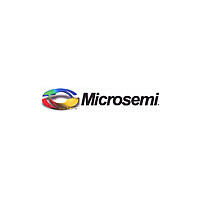LX1970IDU-TR MICROSEMI, LX1970IDU-TR Datasheet - Page 6

LX1970IDU-TR
Manufacturer Part Number
LX1970IDU-TR
Description
Manufacturer
MICROSEMI
Datasheet
1.LX1970IDU-TR.pdf
(10 pages)
Specifications of LX1970IDU-TR
Lead Free Status / Rohs Status
Not Compliant
Copyright © 2007
Rev. 1.5b, 2008-01-25
(no user input) and semi-automatic to fully manual
override implementations. These general guidelines are
applicable to a wide variety of potential light control
applications. The LX1970 can be used to control the
brightness input of CCFL inverters (like Microsemi’s
PanelMatch™ inverter family, or line of controller IC’s).
Likewise it can interface well with LED drivers like the
LX1990 and LX1991 sink LED drivers, or boost drivers
like the LX1992 and LX1993.
the need to correlate the sink and source current of the
LX1970 for the target environment and its ambient light
conditions. The mechanical mounting of the sensor, light
aperture hole size, use of a light pipe or bezel are critical
in determining the response of the LX1970 for a given
exposure of light.
dimming solution with no user interaction. Choose R1
and R2 values for any desired minimum brightness and
slope. Choose C1 to adjust response time and filter 50/60
Hz room lighting. As an example, let’s say you wish to
generate an output voltage from 0.25V to 1.25V to drive
the input of an LED driver controller.
represents the minimum LED brightness and 1.25V
represents the maximum.
determine the ratio of R1 and R2.
maximum output source current coming from the
LX1970 under the application’s maximum light exposure,
lets say this has been determined to be about 50µA .
Thus R2 can be calculated first order as follows:
The following examples present both fully automatic
In each specific application it is important to recognize
The example in figure 2 shows a fully automatic
Next the value of R2 can be calculated based on the
3V
R2
I N T E G R A T E D
=
⎡
⎢ ⎣
1.25V
R1
50µA
R1
VSS
=
3.3V or 5V
⎤
⎥ ⎦
R2
R2
VDD
SRC
=
11861 Western Avenue, Garden Grove, CA. 92841, 714-898-8121, Fax: 714-893-2570
⎡
⎢
⎣
25KΩ
Figure 2
0.25V
SNK
3.0V
The first step would be to
∴
10µF
−
C1
1
R1
N/C
To inverter brightness
⎤
⎥
⎦
input or LED driver
=
=
P R O D U C T S
11
11
controller.
×
×
R2
R2
A P P L I C A T I O N E X A M P L E S
=
275KΩ
The 0.25V
Analog Mixed Signal Group
Microsemi
The output node will actually reach 1.25V when the source
current from the LX1970 is only about 44µA since about
6µA of current will be contributed from R1. This assumes a
high impedance input to the LED driver. In Figure 3 user
adjustable bias control has been added to allow control over
the minimum and maximum output voltage. This allows the
user to adjust the output brightness to personal preference
over a limited range. The PWM input source could of course
be replaced with an equivalent DC voltage.
added to the example in figure 3. In addition to the gate to
turn on and off the LX1970, a diode has been inserted to
isolate the LX1970 when it is shut down.
ways the sensor can be used. For example since there is also
a complimentary sink output a resistor from VDD to SNK
could develop a voltage that could be compared (with some
hysteresis) to a fixed reference voltage and develop a logic
shutdown signal. If the application is utilizing a transflective
or reflective LCD display such a signal could disable the
backlight or front light to the display when reaching sufficient
ambient light.
Figure 4 shows how a fully manual override can be quickly
The preceding examples represent just a few of the many
3.3V PW M
PW M
control
Diable
3.3V
P
Visible Light Sensor
RODUCTION
30K
CMO S
40K
R1
Gate
60K
VSS
3.3V or 5V
25K
R2
Figure 3
Figure 4
VDD
SRC
10µF
VSS
D
SNK
VDD
SRC
ATA
SNK
30K
10µF
S
brightness input or
HEET
N/C
brightness input or
controller input.
To inverter
LED driver
controller.
N/C
To inverter
LED driver
LX1970
Page 6











